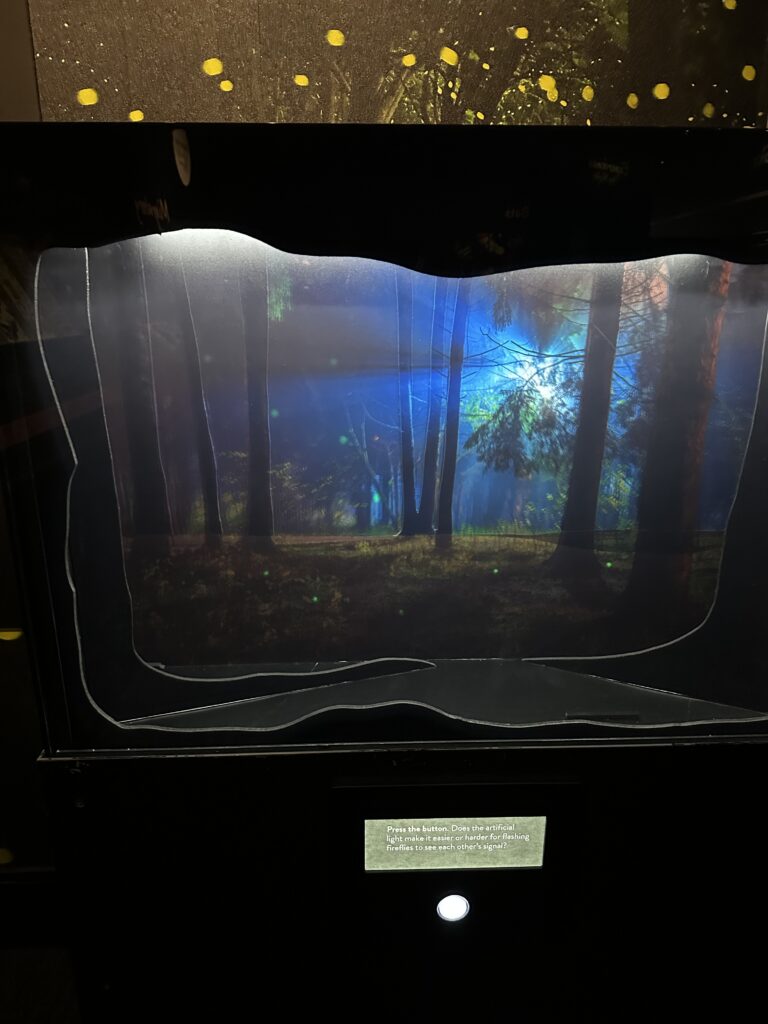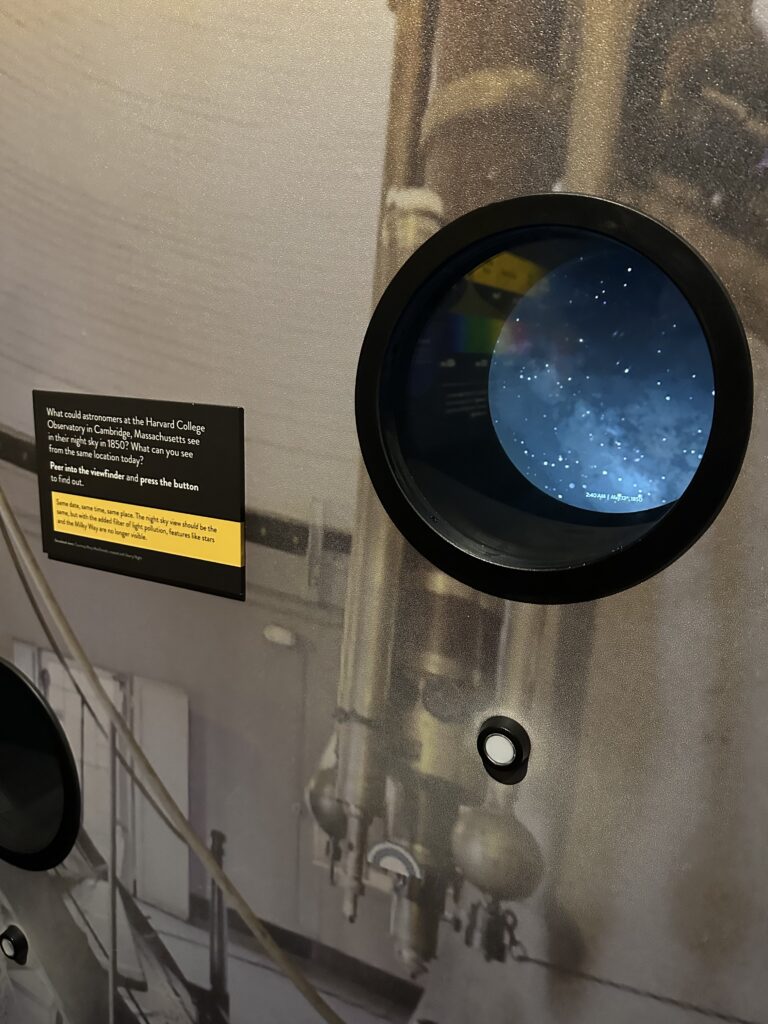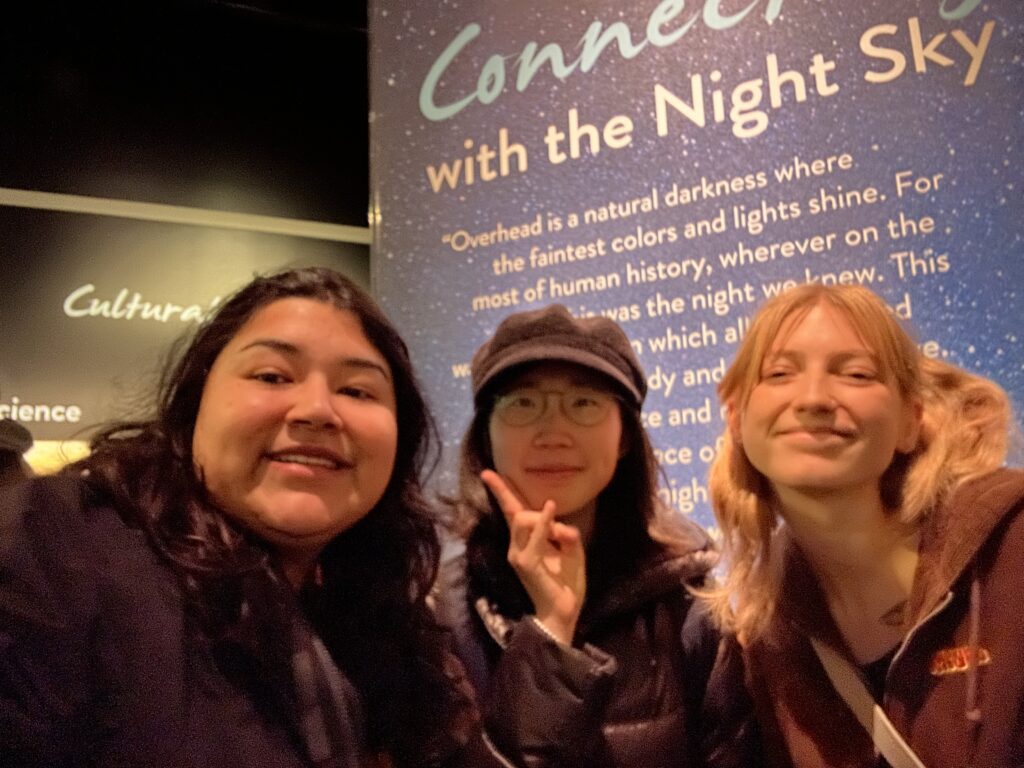Lights Out: Recovering our Night Sky
The exhibit Lights Out: Recovering our Night Sky, was my chosen exhibit review for my DH 390 class. It is located at the Smithsonian National Museum of Natural History and is an temporary exhibit curated by several important associations; such as, The World At Night, International Dark-Sky Association, and City Wildlife, to name just a few. The exhibit was largely supported by the Windland Smith Rice Endowment.
The Lights Out exhibit was a wonderfully designed project that show cased many important aspects of the night sky. This included importance, culture, art, and most importantly history. The presentation of the Lights Out exhibit included various photos of the night sky; most of these were photo comparisons between areas of heavy light pollution vs. areas with none. There was a digital porthole to peer through which compared the night sky in 1850 vs. the exact sky in 2020. They also had several forms of light on display as a timeline starting with torches, candles, lamps, and ending with modern electrical lighting. One of my favorite aspects presented was various animals on display. These animals were either nocturnal, had been hurt due to light pollution, or simply just need a dark sky to survive. The exhibit had a very interesting virtual photo-box showing fireflies glowing with and without light pollution, and the difference and importance was astonishing. Lastly, there was several artifacts on display showing the moon and its representation in various cultures. There was lots of digital technology and QR codes for more information.


The exhibit did a very good job including interactive pieces to keep people entertained. I believe the purpose of this exhibit was to shine light of the importance of minimizing light pollution. The curators did a great job setting up the exhibit in a way that plays to our emotions. They built up people’s love for animals, culture, and interests then discussed how they can help. They offered simple solutions for people to contribute by using dim lighting for their houses to reduce impact. The target audience is hopefully people who use lights 24/7. People who leave a large impact on light pollution hopefully can internalize and understand the problem and possibly change.

I think this was a difficult project to create; there was several levels art, history, and lots of artifacts to gather and explain. They also had lots of picture comparisons with decades of years between each photo. I imagine the exhibit took lots time and a large budget. Although it was the Smithsonian, the exhibit was very large and contained multiple rooms, i would think this took lots of time and money to create. I think there was a big risk that with all the resources spent people won’t really care to change or do their part. The exhibit was definitely successful for me, it raised awareness, played to emotions, and asked for change. I felt changed by the exhibit and wanting to minimize my impact and due to this feeling I know it was a good exhibit.

Leave a Reply